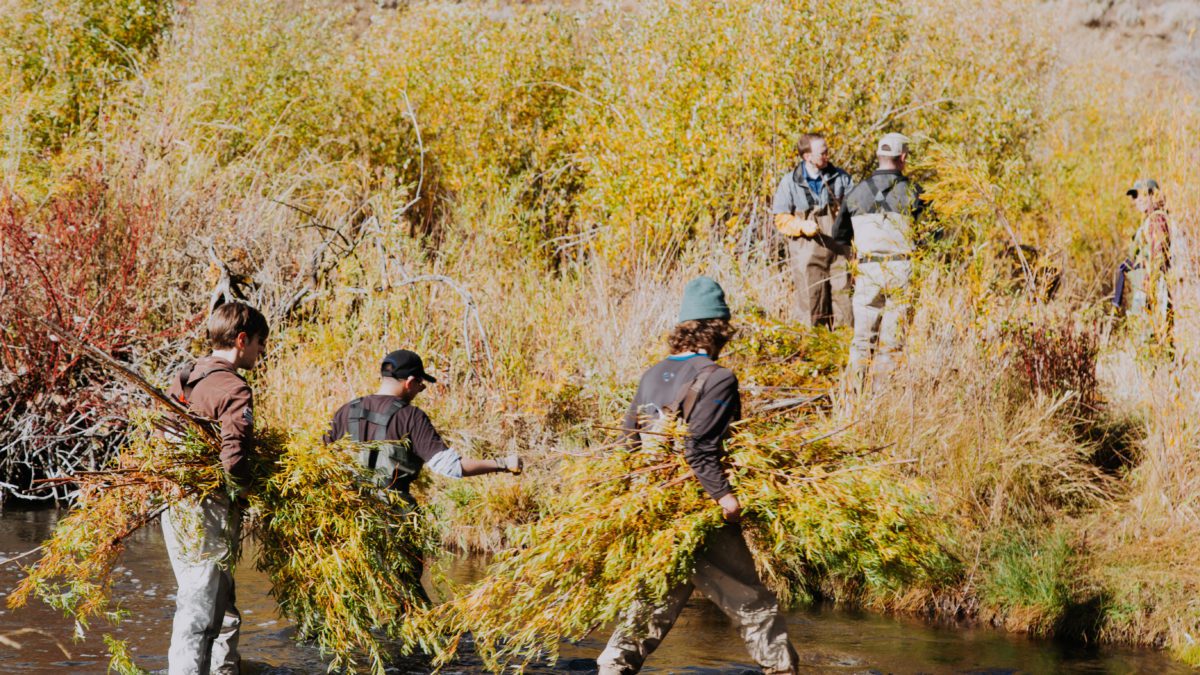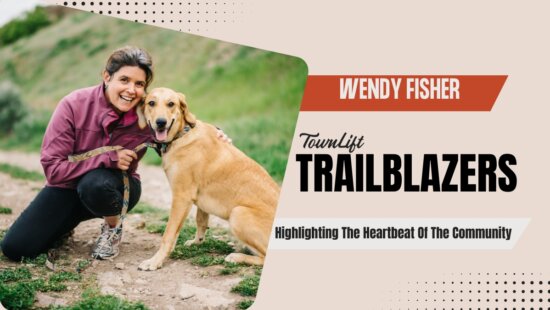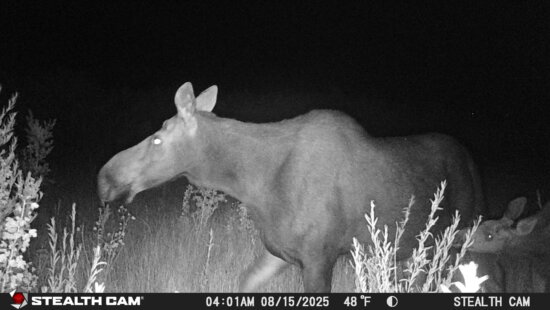Environment
Sageland Collaborative calls for volunteers in East Canyon Creek restoration work

Sageland Collaborative doing stream restoration work Photo: Lindsay Aman
SUMMIT COUNTY, Utah — Sageland Collaborative is calling for volunteers to help with stream restoration work at East Canyon Creek along Rasmussen Road on September 23 and 24. The work will be done from 9 a.m. to 3 p.m., with the meet-up location at the Bad Apple Trailhead parking lot.
East Canyon Creek is part of the watershed in Summit and Morgan Counties. Ultimately the creek ends in East Canyon Creek Reservoir, but not before crossing areas such as the Mormon Flats, Swaner Preserve, and many trailheads in the area. Unfortunately, the creek faces several challenges on its path, with many being human-caused.
Rose Smith, a stream ecologist with Sageland Collaborative, sait the following about the restoration effort:
“East Canyon Creek is a stream where some sections are doing pretty well and have plenty of vegetation on the side and other sections devoid of woody vegetation and tree canopy. The section we’re working on has been disconnected from the floodplain so much that willows and other native trees that would be growing there can’t survive. It’s too dry on the floodplain.”
To help the areas in need, Sageland Collaborative and the participating volunteers will construct Beaver Dam Analogs (BDA). These BDAs are made similarly to how a beaver would naturally build dams, and fulfill the same function for the surrounding ecosystem.
“The first thing we start with is installing fence posts across the creek that go about a foot or two into the stream bed. The custom untreated fence posts, sharpened on one end, are sourced, and then a contractor comes in and installs them with a hydraulic post pounder. After the posts are installed, volunteers come, we take shovels, and we shovel lumps of sod. We take willow branches and weave them between the fence posts we use rock, kind of like anything you could find at the site,” said Smith.
Sometimes workers will have to get creative when it comes to sourcing materials to build the BDAs, as there might not be enough at the site they are working on. Situations like this have led partnerships between organizations like the Swaner Preserve and the local community, who in past projects collected Christmas trees that are now being used as part of the BDA.
“They’re really great like kind of big, tangled messes of branches that are great for capturing sediment has pieces of organic material, they’re flooding downstream, and we want that to happen. Because we want to capture the sediment and we’re rebuilding the stream bank connected with floodplain,” said Smith.
Restoring streams with BDAs or releasing beavers into an area has many benefits for humans and the rest of the ecosystem, some of which are doubly important given the drought. For Summit County Public Lands Manager Jess Kirby, who will be volunteering in the restoration work, spoke with TownLift about the benefits of beavers and the dams they create. Kirby continued, saying:
“We started connecting how restoration work in stream areas and improving riparian zones can become natural fire breaks for areas. And so it aligned with a lot of the work we were doing in the county to reduce fuels and create buffers for a wildfire. Then you’ve got the added benefit of a restored stream, restoring habitat, more water in the ground, and keeping the system wet. It’s increasing the water table and allowing vegetation to come in naturally. There’s just such a benefit to having the full system working as it should.”
Utah Open Lands, which holds the conservation easement where the work is being done, fully supports the project and the creation of BDAs.
“We have seen success with Beaver Dam Analogs in other areas to facilitate better wetland function. Wetlands are a natural filtration sponge which benefits water quality, and this should benefit East Canyon Creek,” said Wendy Fisher, Executive Director of Utah Open Lands.
Volunteers must register on the Sageland Collaborative website for this event and others. Sageland Collaborative recommends that volunteers bring gloves, eye protection, water, sun protection, bug spray, and lunch. There are other opportunities to volunteer on projects in other locations as well.



















